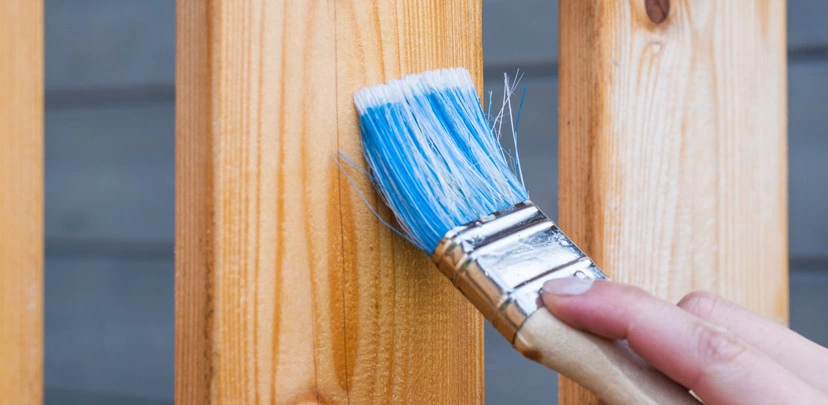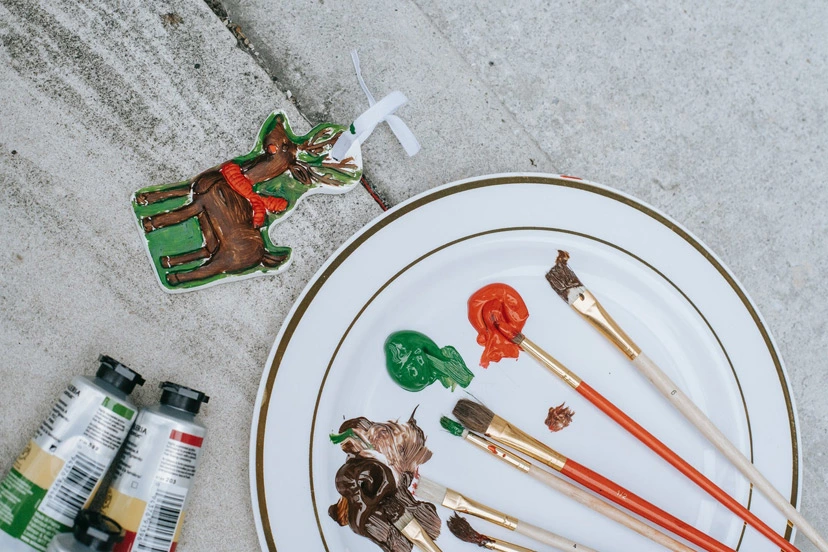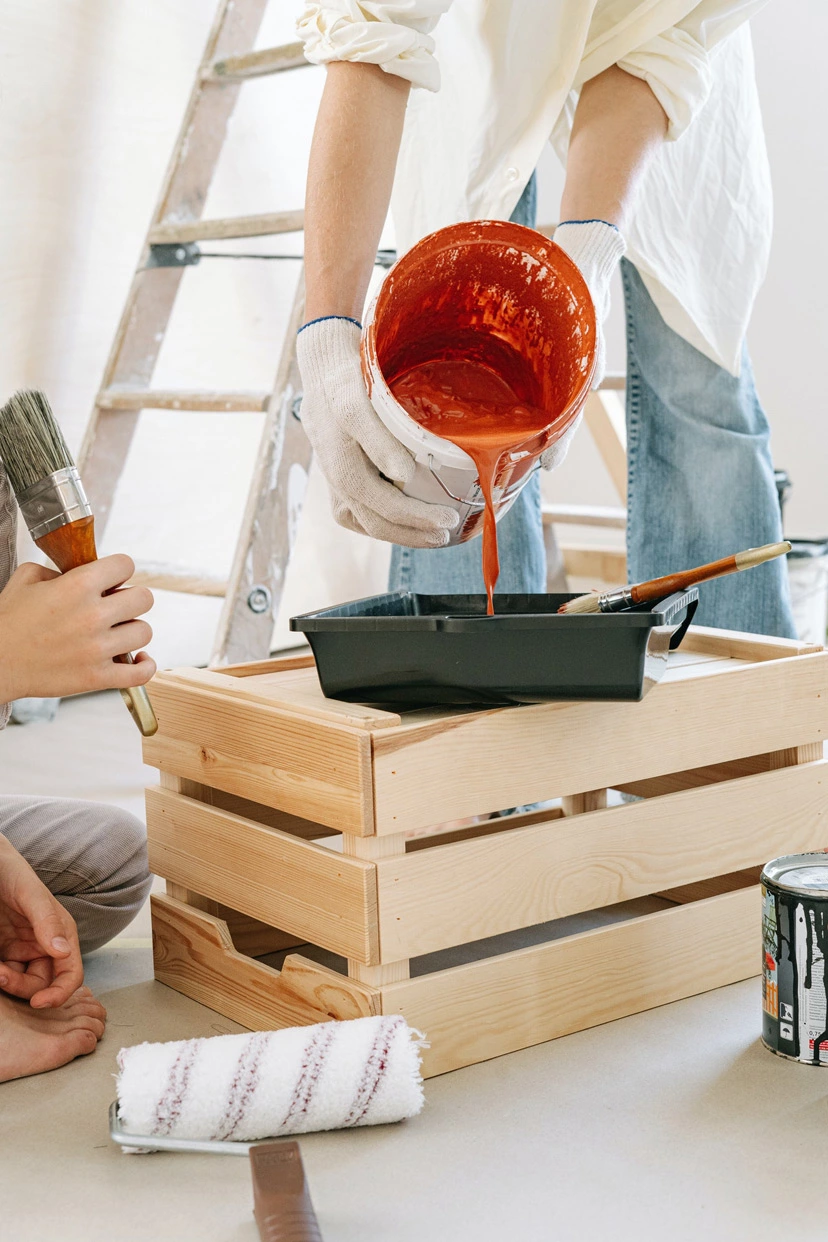Scratch resistant paint for wood is considered as a holy grail as far as the world of surface finishes is concerned. It suggests a unique kind of surface that is hard enough to endure surface impacts and has the ability to reform its damaged surface.
Table of Contents
What is scratch resistant paint for wood?
Scratch resistant paint or simply called SRP is a special kind of surface protection that can hide surface deformations after an impact. It means that any surface deformation brought about by an object’s impact remains concealed.

It can be because the surface absorbs the impact of the deformation without breaking. It can also be due to the fact that the surface itself is already hard enough that lets it withstand an impact. It helps ensure that no new imperfections on the surface are incurred.
Normally, a scratch will occur if you hit a surface with something. But, this doesn’t happen in the case of scratch resistant paint.
Advantages of using scratch resistant paint

Probably the number one advantage of scratch resistant paint for wood is that it allows and ensures that the surface remains unaffected by everything going on around it.
If a stick accidentally hits the paintwork on wooden furniture, for example, this might leave a light mark on the scratched area. There are also chemicals that can damage paintwork. Even a key scratching your door can easily ruin its paintwork. While you can always remove it or apply a new coat of paint, it would be much better for you and your wallet if you just prevent the problem from happening in the first place.
Scratch resistant paint for wood can resist that unsightly formation of scratches to ensure that the surface looks pristine and flawless even after a long time of daily use. A stick hitting the paint, paint chips, and others will no longer matter than much. They will no longer cause any imperfections on the surface and the paint will remain flawless for as long as you want and need it to.
Scratch resistant paint for doors
It doesn’t matter if it is from your kids, pets, or just the result of general wear and tear because scratches on your door are definitely not a good sight to behold. Good thing that you can now use scratch resistant paint for wood doors.
To save your wooden door from scratches, the first thing you should do is sand down all the existing scratches there. You should then clean the area afterwards then use wood filler to fill in all the scratches. Sand the door all over again, and use your scratch resistant paint as the final step.
Hard Coat is a good scratch resistant paint that you can use on your doors, exterior and interior alike. The latex paint additive of Hard Coat offers a tougher and more durable finish once you add it to latex paints. It has a ceramic-based technology that is just the same with the ceramic-based exterior paints. This unique technology can suspend the ceramic particles all over the latex paint using the unique resins that can evenly lock those ceramic particles all over the applied paint. Many paints also tend to level and hide better when added with Hard Coat.
Scratch resistant paint for cabinets

Just like other big purchases, cabinets are significant investments you would surely want to keep and maintain for a long time. It is essential that you take extra care of your cabinets and learn the best ways of protecting the surfaces of your cabinets from daily wear and tear. Although your cabinets will never last forever, you can use scratch resistant paint for wood.
You can also use clear polyurethane if you are looking for protective coating for your cabinets. This can adhere to almost everything and once it cures, it turns as hard as other finish materials you can find in the market. You can also brush on both water- and oil-based polyurethane to save you from the need to buy pricey spray equipment.
Polyurethane can be applied over oil-based and latex paint. However, before doing so, make sure that the paint is already completely cured and dry. The top coat may block the air required for curing and in case the pain is still soft, this might end up peeling in short order. The curing time can vary based on the specific type of paint but it is often less than one week. Prior to applying polyurethane, you have to manually scuff the paint using a 220-grit sandpaper to form a bond.
You will need a minimum of two coats of the undiluted material coming from the can so you can achieve the best finish. Use straight and long strokes to brush it and avoid overloading, specifically on vertical surfaces if you don’t want to end up dealing with drips.
In the event that drips occur, let them dry and use a razor to scrape them off before covering them with fresh material. You should slowly brush polyurethane, especially if you are using a water-based variety since brush turbulence has the tendency to create bubbles.
Scratch resistant spray paint for wood
When using scratch resistant spray paint for wood, your chosen primer is important. Choose the wrong one and the painted finish might end up chipping, scratching, and peeling in no time.
You can apply the primer using a sprayer or an off the shelf aerosol rattle can. A canned off the shelf primer can yield an excellent finish. However, make sure that you pick one that is labeled adhesion or bonding to ensure that the primer will bind to the wood.
You can also look for other adhesion or bonding primer in a gallon or quart-sized container than use an airless sprayer or high volume low pressure or HVLP sprayer to apply.
An important tip here is to perform a scratch test.
- Try applying primer to one small part and let it dry overnight.
- Scratch this off the next day using your fingernail. You have adhesion if nothing will come off. You will need to look for another primer if you can easily scratch it off. Sand the bare wood smooth using fine or medium grain sandpaper. In the case of glossy surfaces, you should lightly sand it if it was painted earlier. Wipe it clean using a tack cloth to get rid of dust.
- Next step is to apply primer for sealing the surface if you want. You should always prime exterior wood for the best level of durability. Make sure you refer to your product label for the specific recoat and dry times.
Bonus: You may also want to learn more on why does furniture creak at night after a warm day and how to paint laminate furniture without sanding.

